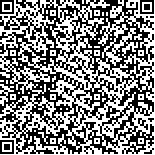| 摘要: |
| 评价内蒙古乡村人居环境质量,分
析空间格局分异特征,对厘清地域差异化
结构、因地制宜的提升和改善乡村人居环境
质量具有重要意义。以内蒙古自治区范围内
7个盟市、11个旗县、25个乡村、278个村民
样本为研究对象,在田野调研获得一手数
据基础上,以盟市域为单位测度乡村人居环
境质量,旨在剖析不同区域乡村人居环境的
空间格局分异特征。研究发现内蒙古乡村人
居环境质量呈现“东西高、中部低”的空间
格局;根据区域主导产业划分,乡村人居环
境质量呈现农区优于林区、林区优于牧区的
空间格局特征;不同区域间的物质供给条件
存在明显“两级分化”现象,社会支撑力度
小、居民满意度低、人口老龄化等问题普遍
存在。 |
| 关键词: 乡村人居环境 质量评价 空间格
局 内蒙古自治区 |
| DOI:10.13791/j.cnki.hsfwest.20190416 |
| 分类号: |
| 基金项目:国家自然科学基金资助项目(51868057) |
|
| Evaluation of Rural Human Settlement Quality and Its Spatial Pattern in Inner Mongolia AutonomousRegion |
|
RONG Lihua,JIA Yudi
|
| Abstract: |
| Inner Mongolia Autonomous Region is located in the northern border region of China,
which has been the place for northern nomadic people to live and multiply since ancient times. At
present, the rural production and living style has gradually formed a rural development pattern
dominated by animal husbandry, which co-exists with the agriculture, half farming and half
nomadism, forestry, etc. There are obvious regional differences among different types of villages.
In order to recognize the development situation of rural living environment in Inner Mongolia
Autonomous Region, it is necessary to carry out objective evaluation and analysis of the quality
of rural development. Nevertheless, the existing evaluation system for rural human settlement is
established mainly under the category of rural areas in China, and thus the evaluation index is
more suitable for rural areas, but shows poor adaptivity to the rural evaluation of Inner Mongolia
Autonomous Region with multiple co-existing types. In order to further evaluate the rural living
environment in Inner Mongolia Autonomous Region objectively, this paper constructs a living
environment quality evaluation system more suitable for the rural areas in Inner Mongolia
Autonomous Region based on the accumulated results from fi eld investigations in recent three
years.
Firstly, the evaluation indexes with strong adaptability to Inner Mongolia Autonomous
Region are selected in the evaluation system, and the evaluation system for the quality of rural
human settlement in Inner Mongolia Autonomous Region is established. With 278 villagers
from 25 villages of the 11 banners that belong to the seven leagues within the administration of
Inner Mongolia Autonomous Region as the subjects and fi rst-hand data from fi eldwork are the
base. The evaluation index system includes 4 system-level indexes, 12 fi rst-level indexes and 39
second-level indexes; the weight assignment is constructed by Delphi method. In combination
with the assigned weight of evaluation index, the fi nal evaluation value of the human settlement
quality of the research samples is obtained by linear weighted summation. Secondly, relying on
evaluation results, the quality of rural human settlements are evaluated in different Alliances
Municipalities. The purpose is to dissect the spatial pattern differentiation characteristics of rural
human settlements in different regions, the development conditions and dynamic mechanism of
rural differentiation. Finally, on the basis of the analysis of the quality characteristics of rural
human settlement, some referential optimization strategies are put forward in this paper, so as to
adapt to the future development of rural areas in Inner Mongolia Autonomous Region.
Evaluating the environment quality of rural human settlements in Inner Mongolia
Autonomous Region and confi rming spatial heterogeneity are of great importance to get across the geological differentiation structure and improve the quality of rural human settlements based on local conditions. According to the evaluation
results of the human settlement quality in Inner Mongolia Autonomous Region, the living environment and facilities in some villages in Inner
Mongolia Autonomous Region have been improved to some extent, but the overall quality score is still relatively low; in addition, the convenience
for villagers to seek medical treatment, go to school, travel and go shopping needs to be further improved. The findings include: 1) rural human
settlements quality features “high on both sides while low in the middle part”; 2) according to the division of regional leading industries, the quality
of rural residential environment shows the spatial pattern characteristics of agricultural area are higher than that of forest area, and forest area are
higher than that of pastoral area; 3) material supply conditions in different regions are evidently polarized; 4) problems such as low social support,
low residents’ satisfaction and aging population are common. |
| Key words: Rural Human Settlement Quality Evaluation Spatial Pattern Inner Mongolia Autonomous Region |


